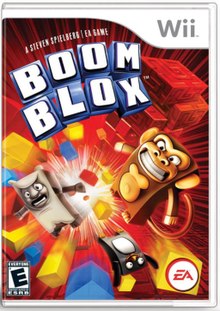
Super Mario 64 DS is a 2004 platform game developed and published by Nintendo for the Nintendo DS. It was a launch game for the DS. Super Mario 64 DS is a remake of the 1996 Nintendo 64 game Super Mario 64, with new graphics, characters, collectibles, a multiplayer mode, and several extra minigames. As with the original, the plot centers on rescuing Princess Peach from Bowser. Unlike the original, Yoshi is the first playable character, with Mario, Luigi, and Wario being unlockable characters in early phases of the game.

Louis Castle is an American video games designer. He is known for co-founding Westwood Studios, designing the PC game Blade Runner, and collaborating with Steven Spielberg on the Boom Blox and Boom Blox Bash Party video games for the Wii console based on Spielberg's design ideas.

Meteos is a 2005 tile-matching video game developed by Q Entertainment and published by Bandai for the Nintendo DS. It was produced by Q Entertainment founder Tetsuya Mizuguchi and designed by Masahiro Sakurai. Meteos was inspired by the video game Missile Command (1980), the film The Matrix (1999) and the television series 24 (2001-2010).

Guitar Hero is a 2005 rhythm game developed by Harmonix and published by RedOctane for the PlayStation 2. It is the first installment in the Guitar Hero series. Guitar Hero was released in November 2005 in North America, April 2006 in Europe and June 2006 in Australia. The game's development was a result of collaboration between RedOctane and Harmonix to bring a Guitar Freaks-like game to United States.

Tetris DS is a puzzle video game developed and published by Nintendo. It was released for the Nintendo DS on March 20, 2006, in North America, April 13, 2006, in Australia, April 21, 2006, in Europe, and April 27, 2006, in Japan. An installment of the Tetris franchise, the game supports up to ten players locally, and supported online multiplayer of up to four players using Nintendo Wi-Fi Connection prior to its discontinuation.

WarioWare: Smooth Moves is a party video game developed by Nintendo SPD and Intelligent Systems. The game was published by Nintendo for its Wii video game system in Japan in December 2006, and in Europe, North America, and Australia in January 2007. It is the fifth game in the WarioWare series of games, and the only game in the series to be physically released for the Wii. Like its predecessors, WarioWare: Smooth Moves is built around a collection of microgames that last about five seconds each, and which require that the player hold the Wii Remote in specific positions. The game offers the microgames to the player in rapid succession, by first instructing the player to hold the Wii Remote in a specific manner, and then showing them the microgame. The microgames are divided into several stages, each of which loosely connects the microgames with the help of a story. Additionally, this was the first spin-off Mario game to be released for the console.

Bomberman Land, known in Japan as Bomberman Land Wii, is an action puzzle video game developed by Racjin and published by Hudson Soft. It was released in Japan for Wii on March 8, 2007, January 29, 2008 in North America, and March 14, 2008 in the PAL region. Part of the Bomberman franchise, it is the fifth game in the Bomberman Land series and the console counterpart to the portable version released for the PlayStation Portable later in the same month.

Kororinpa is a video game for Nintendo's Wii video game console. It was released in Japan on December 2, 2006 as a launch title for the Wii, then in Europe on February 23, 2007 and North America on March 20, 2007.
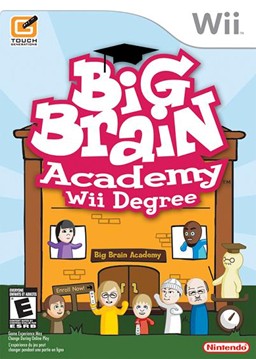
Big Brain Academy: Wii Degree, known in PAL regions as Big Brain Academy for Wii, is a video game released for the Wii. A sequel to the game Big Brain Academy for the Nintendo DS, it too measures a player's brain's weight, but with new games and puzzles to solve. The game makes use of Miis and uses WiiConnect24 features, allowing competition amongst users' friends, whose codes are automatically imported from the Wii's internal address book.
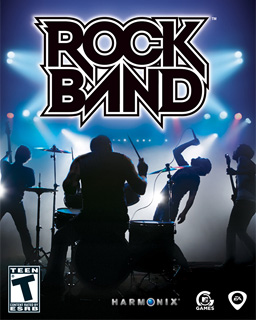
Rock Band is a 2007 rhythm game developed by Harmonix, published by MTV Games, and distributed by Electronic Arts. It is the first installment in the Rock Band series. The Xbox 360 and PlayStation 3 versions were released in North America on November 20, 2007, while the PlayStation 2 version was released on December 18, 2007 and the Wii version on June 22, 2008. Harmonix previously developed the first two games in the Guitar Hero series, which popularized gameplay of rock music with guitar-shaped controllers. After development of the series was shifted to Neversoft, Harmonix conceived Rock Band as a new title that would offer multi-instrument gameplay.

Mario Kart Wii is a 2008 kart racing game developed and published by Nintendo for the Wii. It is the sixth installment in the Mario Kart series, and was released in April 2008. Like its previous installments, Mario Kart Wii incorporates playable characters from the Mario series, who participate in races on 32 different race tracks using specialized items to hinder opponents or gain advantages. The game features multiple single-player and multiplayer game modes including two to four person split screen. Online multiplayer was supported until the discontinuation of Nintendo Wi-Fi Connection in May 2014. Mario Kart Wii uses the Wii Remote's motion-controls to provide intuitive and conventional steering controls. Each copy of the game was bundled with the Wii Wheel accessory to augment this feature and mimic a steering wheel.

Lego Indiana Jones: The Original Adventures is a 2008 Lego-themed action-adventure video game developed by Traveller's Tales and published by LucasArts. Based on the Indiana Jones media franchise and the eponymous Lego Indiana Jones toy line. It follows the events of the first three Indiana Jones films: Raiders of the Lost Ark, The Temple of Doom, and The Last Crusade. It was released for Microsoft Windows, Nintendo DS, PlayStation 2, PlayStation 3, PlayStation Portable, Wii, Xbox 360, and Mac OS X.
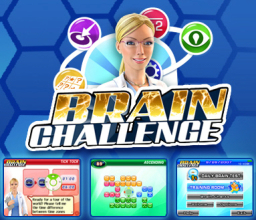
Brain Challenge is a mental exercise video game, featuring "brain exercise puzzles". The game was developed by Gameloft Beijing for mobile phone and iPod and released on September 5, 2007. In 2008 was followed by a Nintendo DS version on January 8, an Xbox Live Arcade release on March 12, and a PlayStation 3 launch on November 27. The N-Gage 2.0 version was released on the day of the service's launch, April 3, 2008. A version for WiiWare was released in autumn 2008 on all three regions. The Wii version also uses Miis for the players profile. OnLive also had launched their new streaming game platform with Brain Challenge on July 27, 2010. The game was released for Mac OS X in January 2011.

TV Show King is a quiz video game developed by Gameloft Montreal and published by Gameloft. It was released as one of the WiiWare launch titles in North and Latin America on May 12, 2008. It was also released later for iPhone OS in November 2008. The game was also released for PlayStation 3 on August 6, 2009, as a download from the PlayStation Store, and includes trophy support.

Tetris Party is a puzzle video game by Hudson Soft for WiiWare. An installment of the Tetris series, the game supports the use of Miis and the Wii Balance Board, and features both local and online multiplayer in addition to several single-player modes unique to the game.

Rotohex is a Nintendo video game for the Wii's WiiWare service. It is a remake of the Japan-only bit Generations title Dialhex. It was released as WiiWare in North America on October 27, 2008.

Boom Blox Bash Party, called Boom Blox Smash Party in non-English territories, is a puzzle video game by Electronic Arts for the Wii. The sequel to Boom Blox (2008), it was developed by EA Los Angeles and directed by filmmaker Steven Spielberg. The game features more than 400 levels, and players are able to download new levels and upload their own custom-created levels to share online.

New Super Mario Bros. Wii is a 2009 platform game developed and published by Nintendo for the Wii. A follow-up to New Super Mario Bros., it was first released in Australia, North America, and Europe in November 2009, followed by Japan a month later. A high-definition port for the Nvidia Shield TV was released in China in December 2017. Like other side-scrolling Super Mario games, the player controls Mario as he travels eight worlds and fights Bowser's henchmen to rescue Princess Peach. New Super Mario Bros. Wii was the first Super Mario game to feature simultaneous cooperative multiplayer gameplay; up to four people can play in cooperative and competitive multiplayer modes, taking control of Mario as well as Luigi and one of two multicolored Toads. The game also introduces "Super Guide", which allows the player to watch a computer-controlled character complete a level.

Dr. Luigi is a 2013 puzzle video game developed by Arika and Nintendo SPD, and published by Nintendo for the Wii U console. It is the sixth game in the Dr. Mario series and is part of the larger Mario franchise. The player must clear a field of invading viruses using pill capsules to eliminate them, in a tile-matching fashion. The game offers four modes: "Operation L", which utilizes L-shaped pills; "Virus Buster", using the Wii U GamePad and touchscreen; "Retro Remedy" with standard Dr. Mario gameplay; and local and online multiplayer options, online utilizing the soon to be defunct Nintendo Network Service.
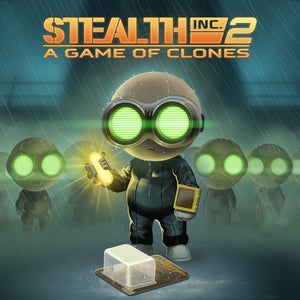
Stealth Inc 2: A Game of Clones is a 2D puzzle platform video game which was developed and published by Curve Digital. The game is a sequel to Stealth Bastard Deluxe, featuring different mechanics which involve puzzle sections. The game was released for the Wii U on October 23, 2014. The PlayStation 3, PlayStation 4, PlayStation Vita, Xbox One and Microsoft Windows versions of the game were also released in April 2015.
